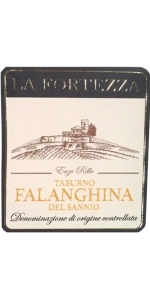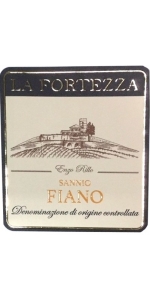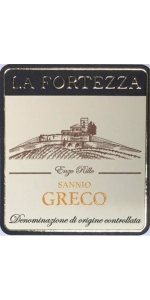Wine from Campania

Campania is a region in Southern Italy and boasts the second largest population of all Italian regions. It is approximately 5,248 square miles. The Captial City is Naples and is the host region of the ancient city of Pompeii and Mount Vesuvius. It is located on the coast of the Italian Peninsula with the Mediterranean Sea bordering the region to the West and including the Island of Capri and Phlegraean. The name Campania derives from the Latin and when translated from the original “Campania Felix”, means fertile countryside. Since the 12th century B.C., winemaking has been a part of the traditional culture in the area. Wines grown here are meant to be consumed for immediate satisfaction. It is home to the Taurasi DOCG, and also the origin of the Falanghina variety. Campania’s viticulture is rich in abundant sunshine, dry hot summers, long growing seasons, and mild winters. The soil is volcanic and rich in minerals. Wines produced here are aromatic whites with floral notes and complex reds that are meant to be consumed young. Campania is home to grape varieties Aglianico, Fiano, Greco, and some of the lesser known grape types Biancolella, Forastrera, Suppezza, Sabato, Sciascinoso, Asprinio, and Coda di Volpe.
All older vintage wines have been purchased from a single collectors cellar. Pictures can be requested before shipment.
Fortezza Falanghina del Sannio Taburno is made from 100% Falanghina - 25 years old
No oak.
Straw yellow color with greenish reflections. Fresh and floral scents, citrus aromas, apple, pear and mineral notes. Round, smooth and juicy with high acidity, yet well balanced with rich flavors.
Southeastern exposure with an altitude of 300-450 meters above sea level.
Planting density: 3,500 vines per hectare on average.
Training system: espalier with Guyot pruning.
Manual harvest in small crates between the end of September and beginning of October.
Winemaking in white in stainless steel tanks at controlled temperature.
Pairs well with seafood, mozzarella cheese, risotto, white meats.
Fortezza Fiano DOC Sannio is made from 100% Fiano - 20 years old
No oak.
Straw yellow color with light green reflections. A rich bouquet of white flowers with mineral notes, freshnesss and elegance, good acidity and good body.
Southeastern exposure with an altitude of 250-350 meters above sea level.
Planting density: 3,500 vines per hectare on average.
Training system: espalier with Guyot pruning.
Manual harvest in small crates end of September.
Winemaking in white in stainless steel tanks at controlled temperature.
Pairs well with seafood, grilled tuna, white meats.
Review:
" Clean and fruity with aromas of chopped apples, sliced pears and white peaches. Medium-bodied with a juicy, simple and refreshing palate. Drink now.”
- James Suckling (August 2022), 90 pts
Fortezza Greco DOC Sannio is made from 100% Greco - 20 years old
No Oak
A gold color; complex aromas of ripe fruits, candied fruit, honey. Soft and well-structured.
Southeastern exposure with an altitude of 250-350 meters above sea level.
Planting density: 3,500 vines per hectare on average.
Training system: espalier with Guyot pruning.
Manual harvest in small crates end of September.
Winemaking in white in stainless steel tanks at controlled temperature.
Pairs well with fresh cheese, pasta with vegetables, vegetable soups.
Fortezza Veceta Chardonnay is made from 100 percent Chardonnay.
Even tough the name LA VECETA is not present on the label, it is the name of the lady that is present on the front label. The Veceta is the "Lady" that wakes up very early in the Morning to go to work in the vineyard before the sun get too hot to work. On the label she is depicted in the center bent over the ground.
Brilliant straw yellow. On the nose it expresses itself with hints of peach, tropical fruits and citrus fruits and notes of white flowers. In the mouth it is intense, full, tasty and balanced and the notes of red peach perceived on the nose give way to peach in syrup in the mouth.Very versatile and extremely pleasant wine.
Ideal for cheering up an aperitif but goes well with fish-based dishes, fresh cheeses, salads and summer menus. Ideal for cheering up an aperitif but goes well with fish-based dishes, fresh cheeses, salads and summer menus.
- back
Selected Options
Regions
Categories
Pricing
Countries
Regions
Grape Types
Wineries
Organic/Free Shipping
The Special Club concept started in 1971. A dozen wine growers from some old families of Champagne had an idea to familiarize people with the originality of the “Champagne de Vigneron” (Champagne of wine grower), thanks to prestigious vintages.
In the beginning, they created an association called the “Club des Viticulteurs Champenois” and chose a bottle with a special shape, created exclusively for them & used only by then. In 1988, they changed the bottle and the label. In 1999, the Club changed its name to “Club Trésor of Champagne.”
The Club Trésors comprises 28 artisan wine makers, selected from the finest areas of the Champagne region, each one recognized for the quality of their work. The Club Trésors is the only organization in Champagne to select its members according to a set of unrelenting quality standards:
- Each wine maker must make their champagnes entirely in his, or her, own premises and cellars. Furthermore, the champagne must be made exclusively from grapes harvested in his, or her, own vineyards.
- Each wine maker is devoted to his work and passionately protects the quality and the unique character of his own terroir.
- The jury of oenologists and wine professionals who select the champagnes demand irreproachable quality in both the work in the vineyard and the wines.
- Each champagne is subject to two blind tastings (once at the still wine stage before bottling and again after 3 years ageing in bottle) by a panel of passionate and distinguished oenologists and wine makers. 4 years aging minimum is required.
- A Special Club champagne may only be made in outstanding vintage years.
Roland Champion's Special Club selection has rich and structured aromas. Very pleasant and generous roundness, nice length in mouth. Golden color with buttery and fruity aromas. All the expression of a magnificent terroir for your most pleasurable moments.
This vineyard is situated at over 3,000 feet in altitude in Valle de Uco, and the vines are over seventy years old. This light soil is sandy with some silt, is very permeable and has boulders and a broken layer of limestone at a depth of 2.5 feet. Traditional irrigation is fed by water from the Andes Mountains. Temis has the coldest climate of all Alta Vista’s terroirs. Nights are quite cool and days are warm and soft, with constant breezes that help to keep the vines and grapes healthy. The grapes have a slow, gradual cycle of ripeness that is balanced and ideal. Planted in 1942, the selection massale vines are characterized by small clusters with small, compact grapes.
Review:
There’s a touch of bark, grilled Mediterranean spice savoriness to the rich but fresh blackberries, salted black plums and graphite notes. Pretty saline and flavorful on the palate. The tannins are powerful yet fine-grained. A structured and characterful malbec from old vines in El Cepillo.
-James Suckling 94 Points









